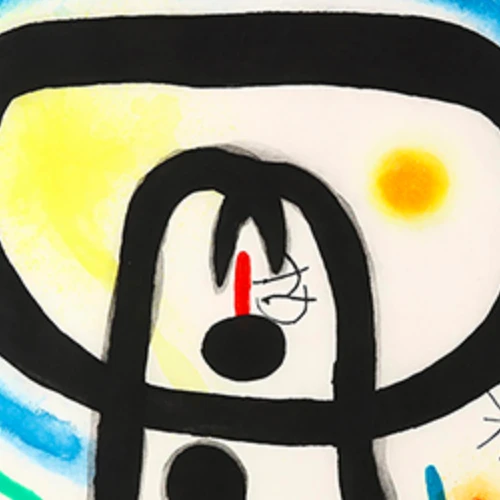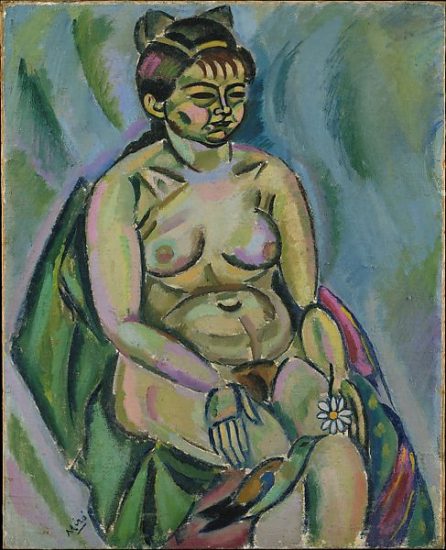By 1930, Joan Miró had developed his own unique style of imagery derived from elements of Catalan folk art and the art of children and this was suited wonderfully for the etching medium as the fluid line work and fanciful figures enabled him to create crisp details. A constant experimenter however, the etchings are a wonderful precursor of what was to come for his printmaking skills later in his life.
Finding international success, with the opening of the Pierre Matisse Gallery in New York, Miró became an influential part of the Modern Art Movement in America. With the outbreak of the Spanish Civil War however in 1936, Miró had to flee Spain and remained in France where he was commissioned to create a monumental work for the Paris World’s Fair. Then World War II broke out and he was forced to relocate to Normandy, then fled back to Spain in 1940. During this time, Miró created his famous twenty-three gouache series Constellations (1940).
The Museum of Modern Art, New York held Miró’s first major museum retrospective in 1941, and that same year Miró began working in ceramics with Josep Lloréns y Artigas. Always trying to find new ways to express himself, it was during 1948–49 when Miró lived in Barcelona, and made frequent visits to Paris that he began to experiment with his printmaking techniques at the Mourlot Studios and the Atelier Lacourière. Such printmaking techniques would result in his later mastering of aquatints and carborundum, some of the most difficult graphic works to create.



